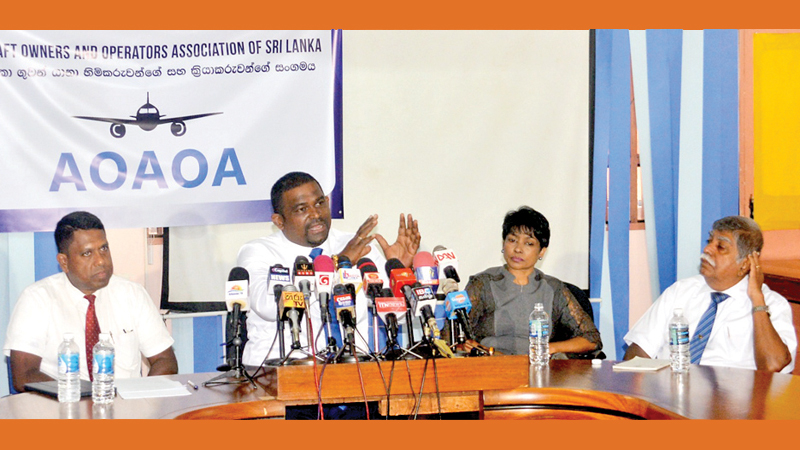The Aircraft Owners and Operators Association (AOOA) expressing concern over the threat posed to the safety of flights because of the concrete boundary wall at the Ratmalana International Airport said that the authorities in charge of civil aviation had failed to act expeditiously on the matter which warrants serious attention.
The president of the Association, Samith Abeygunawardena told the media in Colombo last week that the wall continues to remain and it is clear that Sri Lanka does not learn from the mistakes made by other countries. He was referring to the recent JEJU aircraft crash on December 29 in South Korea where 179 died when the aircraft collided with a concrete wall-like structure at the end of the runway.
The boundary wall only provides a great commercial advertising opportunity where a leading conglomerate had leased the wall space.
Abeygunawardena said the Association had informed the past and present Director General of the Civil Aviation Authority since the wall was built around 2006 -2007 in violation of International Civil Aviation Organisation (ICAO) standards.
The Association alleges that the DG of the CAA who is the sole authority with powers vested by an Act of parliament to ensure the safety of aircraft operations in Sri Lanka had not done his duty in this regard.
The Association said that the Minister of Transport, Highways, Ports and Civil Aviation had instructed the Civil Aviation Authority for a report and that the wall should be removed and replaced with a fragile fence which is the corrective measure to be taken in this regard conforming to ICAO standards.
However, the Aircraft Operators Association allege that the DG, CAA had ignored this fact and had not advised the Minister of the correct ICAO standards and procedures and had passed the ball by requesting further instructions from the Secretary of the Ministry of Defence.
The Association said the Katunayake and Mattala airports do not have such walls and have fragile fences instead.
It also said that the domestic aviation industry was facing a complete breakdown in every aspect of the operation due to two important reports being ignored by the DG of the CAA. It has failed to highlight the outcome of these vital reports to the secretary to the Ministry of Ports, Shipping, Transport and Civil Aviation.
The AOOA said that the ICAO audit report and the OPA report have been disregarded by the authorities at the Director General of Civil Aviation even after the concerns were brought to its notice by the Association which had handed over copies of the two reports to the Secretary of the Ministry of Transport, Highways, Ports and Civil Aviation on December 11, 2024. It appears that still no update in this regard has been brought to the attention of the Ministry, it added.
Responding to allegations of the AOOA, the Civil Aviation Authority stated that the boundary wall at the Galle Road-end of the Ratmalana Airport complied with the required standards for Obstacle Limitation Surfaces. All required safety areas on the runway’s Galle Road-end have been set up even beyond the recommended limits.
However, taking into account the concerns raised by the flying community at the Ratmalana Airport, the CAASL stated that it had no objection to the removal of the boundary wall provided that a thorough security threat assessment is conducted by state security authorities.
It stated that if the boundary wall is removed, it will be mandatory to establish a perimeter fence made of fragile material that adheres to prescribed safety standards.
Public safety along Galle Road during aircraft movement must be prioritised before the removal of the boundary wall and the installation of a frangible fence. Given the significant vehicular traffic on the Galle Road, an aircraft overrun or undershoot could lead to catastrophic consequences, posing serious risks to road users, public transport passengers and residents living opposite the airport.
The CAASL has brought it to the notice of the Minister of Civil Aviation following a site visit and comprehensive technical study conducted by a committee of technical experts.









